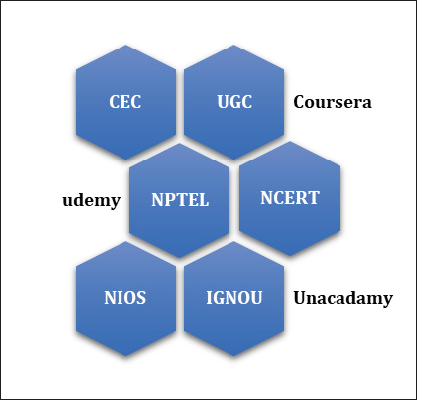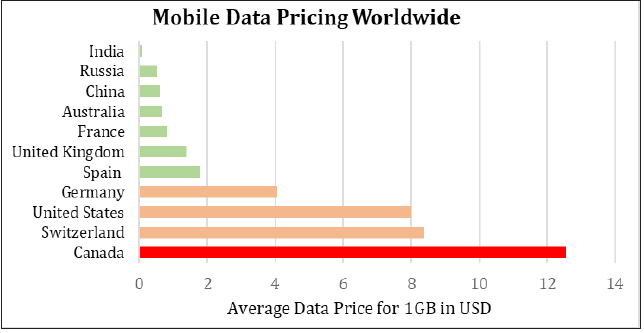- Submissions

Full Text
Research in Medical & Engineering Sciences
Adoption of the New Normal by Indian Education Segment
Archana Nair* and Chandrani Singh*
Professor in MCA department at Sinhgad Instituteof Business Administration, India
*Corresponding author: Archana Nair, Professor in MCA department at Sinhgad Instituteof Business Administration, India
Submission: October 06, 2020Published: December 01, 2020

ISSN: 2576-8816Volume9 Issue1
Introduction
The pandemic of 2020 has affected the world in one of the most adverse ways. Countries were in complete lockdown for weeks, each and every one’s life has undergone changes since then. Like all, the education sector in India has also confronted and envisaged the impact COVID 19. Schools, colleges and universities haven’t opened yet to contain the spread of the virus, even as crucial academic semester is being missed. UNESCO’s data reveals that nearly 32 crore students are affected due to the closures [1]. Students have moved back to their native places leaving the institute and university campuses vacant. Hostels and accommodations of higher educational institutes, which fall in affected areas have been converted to quarantine facilities, a support that has been extended by private and public entities to the state and central government. Reopening of educational institutes is not yet feasible with COVID 19 virus still around. The situation has called for reforms in the teaching, learning and evaluation methods of the education system (Figure 1).
Figure 1: MOOC Providers of India.

Discussion
India has stood strong and tall amidst the COVID onslaught, and the stakeholders of education have made a seamless transition to online modes of instructional delivery, assessment. National agencies like, SWAYAM [Study Webs of Active-Learning for Young Aspiring Minds], and UGC [University Grant Commission] are making available Massive Online Courses that are free, with a focus on accessibility, equality and quality. The internet is flooded with informative content that can be categorized as easy, moderate or complex [2-5]. The content on various online platforms are ever evolving, with creators trying to be unique and authentic in their own way, to ensure greater degree of personalization and reach. There are many government schemes that are helping not only faculties but students too, in creating, structured, high quality lectures and learning material in their respective fields. Technology-led reach and easy access has brought about a socio-economic difference in the lives of Indian learners [2]. Universities and colleges are conducting classes and laboratory sessions online using internet conference call software. Learning and evaluation for undergraduate and post graduate students, have shifted to the online platforms, as the academic year begins in India. The learner only needs to be equipped with active internet connection, appropriate devices and software’s for assured access (Figure 2).
Figure 2:

The scenario
Nearly 56% students at higher educational institutes in India
come from the rural or semi-urban parts of the country and hence
are refrained from access to infrastructure and facilities offered
by universities and colleges within the campus. The responsibility
is now shouldered by the students to make arrangements for the
required infrastructure to continue with their course and schedules.
According to a study and analysis conducted by cable.co.uk,
between 3rd and 25th February 2020, that collected details from
5,554 mobile data plans across 228 countries, found that India has
the lowest mobile data rates in the world [4-10]. India tops the
list where average cost of one gigabyte[1GB] data is the least, at
0.02 USD, as compared to other countries. Though data cost is low,
mobile network coverage in rural and semi-urban parts of India is
feeble and unstable. TRAI [Telecom Regulatory Authority of India]
states the tele-density to be only 21% in rural areas as for urban
areas it is 90%. The widespread 4G technology telecom providers
have not yet been able to provide coverage in rural areas, which in
certain cases have only 2G network. Students when on campus had
access to laboratories, computer labs, libraries, etc. with adequate
facilities and connectivity, whereas now they are left with only their
smart phones and may be a laptop. Many rural areas do not receive
continuous supply of electricity even for 8 hours in a day, increasing
their hardship.
A direct effect was seen in enrollment for MOOCs, it was
expected that enrollments will rise during the lockdown as students
will have a lot of time at hand to take up different courses of their
choice. Rather a substantial drop has been seen in enrolment during
the current semester, as compared to previous years. As students
are away, creating a learning environment in the household, comes
in as a challenge. Many a times resources are limited and have to be
shared with others in the family mostly in rural India. As observed
by the authors, 41% female students do not have their own devices
for online learning. Even that is shared with others in the family.
Conclusion
In this new normal, where technology plays a vital role, aaccessibility of infrastructure and amenities for learning process, to students is of prime importance. With every aspect of teaching learning and assessment going online. Facilities available with students should be taken into consideration. This can be made possible, by putting directed efforts in the development of rural India. In terms of infrastructure, facilities and funds for better support, that will empower students and learners. As of now finding a cordial environment for learning, is grim. Those who have access to electronic devices, internet and conducive learning environment will gain in the new normal. India will be able to smoothly carry the education system on the online mode if all fragments of society have an evenly balanced expediency to resources.
References
- Zahoor AL (2017) Impact of online education in Indian. IJESC 7(7): 13950-13952.
- Pravat KJ (2020) Impact of pandemic COVID 19 on higher education in India. IJAER 5(3): 77-81.
- Muthulakshmi A, Saili G, Nishi T (2016) Mobile & internet education for rural India. IJARCST 4(2): 219-220.
- cable.co.uk/mobiles/worldwide-data-pricing/
- Arun KS, Kumar G, Hosamani HG (2017) MOOCS in Indian higher education system: An overview, conference: international conference on library and information services in knowledge society: innovative, value added services and best practices, India.
- Vikas A, Monika M (2018) A study of e-learning on higher education in India: Its opportunities and challenges, conference: The fourteenth international conference on eLearning for knowledge-based society, Thailand.
- Naresh B, Bhanu D (2018) E-Learning in Indian higher education and future prospects. IJPAM 118(18): 4301-4308.
- Nagappa PS & Omprakash HM (2017) Rural Education in India: A Scenario. SRJIS 4(31): 5268-5272.
- Rana H, Lal M (2014) E-learning: issues and challenges.International Journal of Computer Applications.
- Rosenberg MJ (2000) The e-learning readiness survey: 20 key strategic questions you and your organization must answer about the sustainability of your e-learning efforts.
© 2020 Archana Nair. This is an open access article distributed under the terms of the Creative Commons Attribution License , which permits unrestricted use, distribution, and build upon your work non-commercially.
 a Creative Commons Attribution 4.0 International License. Based on a work at www.crimsonpublishers.com.
Best viewed in
a Creative Commons Attribution 4.0 International License. Based on a work at www.crimsonpublishers.com.
Best viewed in 







.jpg)






























 Editorial Board Registrations
Editorial Board Registrations Submit your Article
Submit your Article Refer a Friend
Refer a Friend Advertise With Us
Advertise With Us
.jpg)






.jpg)














.bmp)
.jpg)
.png)
.jpg)










.jpg)






.png)

.png)



.png)






